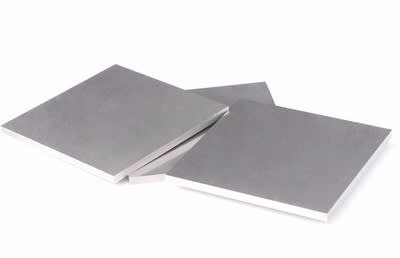Advanced ceramics is a new material with wide application. When it comes to advanced ceramics, people often think of it as a stone, or only as a container like a teacup. However, modern advanced ceramics can produce electricity or mechanical processes, which have been developed many functional applications.
Under the command of the teacher's password in P.E class, the students will move quickly to the left or to the front. And advanced ceramics, such as piezoelectric ceramics, can also be arranged rapidly under the action of an electric field. When the electric field turns 90 degrees, it immediately follows the direction, and the response time is within milliseconds. In addition, the transfer of charge within the material can be observed. Under the action of the outfield, the function of the ceramic interior is the foundation of many applications.
Piezoelectric ceramics, as the name suggests, it produces electric charges under pressure; the reverse is also true, it produces deformation or vibration under the action of an electric field. Piezoelectric ceramic can be used in the piezoelectric ignition with the piezoelectric effect. When the hand presses the spring on the lighter, the force on the ceramic produces an electric charge. If there is a gap between the slit, this kind of electrostatic pressure will jump fire and form an electric spark, which can ignite the gas and can also be used for projectile detonation and rocket fire.
Piezoelectric porcelain can also be used as a microphone. Under the pressure of human speech, the corresponding telecommunication number of the human voice will be transmitted. A piezoelectric element with a circuit can be a buzzer or an electronic instrument. The piezoelectric element is actually an energy conversion device, the transducer, which enables the conversion of mechanical energy and electrical energy.

Electronic ceramic components are often used in modern life. For example, when people come back to their homes to press the doorbell, the piezoelectric doorbell can make a magpie sound. In hot weather, the fan can be turned on with a piezoelectric remote control; when the weather is cold, the PTC heater can warm the room. The household refrigerator is cooled by the compressor motor, and in which the PTC starter is also used. When watching TV in the evening, first of all, the PTC color eraser removes the image and makes the color image clear. A large number of electronic ceramic components (more than 50%) are used in color TV.
It can be seen from the above that people in modern life have a lot to do with new materials. At present, the production of advanced precision ceramics is very large, and the annual output of piezoelectric ceramics is thousands of tons.
Under the command of the teacher's password in P.E class, the students will move quickly to the left or to the front. And advanced ceramics, such as piezoelectric ceramics, can also be arranged rapidly under the action of an electric field. When the electric field turns 90 degrees, it immediately follows the direction, and the response time is within milliseconds. In addition, the transfer of charge within the material can be observed. Under the action of the outfield, the function of the ceramic interior is the foundation of many applications.
Piezoelectric ceramics, as the name suggests, it produces electric charges under pressure; the reverse is also true, it produces deformation or vibration under the action of an electric field. Piezoelectric ceramic can be used in the piezoelectric ignition with the piezoelectric effect. When the hand presses the spring on the lighter, the force on the ceramic produces an electric charge. If there is a gap between the slit, this kind of electrostatic pressure will jump fire and form an electric spark, which can ignite the gas and can also be used for projectile detonation and rocket fire.
Piezoelectric porcelain can also be used as a microphone. Under the pressure of human speech, the corresponding telecommunication number of the human voice will be transmitted. A piezoelectric element with a circuit can be a buzzer or an electronic instrument. The piezoelectric element is actually an energy conversion device, the transducer, which enables the conversion of mechanical energy and electrical energy.

Electronic ceramic components are often used in modern life. For example, when people come back to their homes to press the doorbell, the piezoelectric doorbell can make a magpie sound. In hot weather, the fan can be turned on with a piezoelectric remote control; when the weather is cold, the PTC heater can warm the room. The household refrigerator is cooled by the compressor motor, and in which the PTC starter is also used. When watching TV in the evening, first of all, the PTC color eraser removes the image and makes the color image clear. A large number of electronic ceramic components (more than 50%) are used in color TV.
It can be seen from the above that people in modern life have a lot to do with new materials. At present, the production of advanced precision ceramics is very large, and the annual output of piezoelectric ceramics is thousands of tons.















